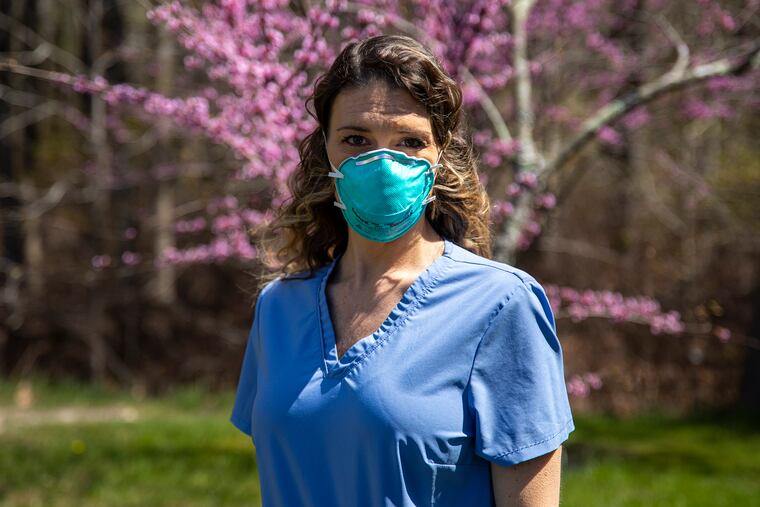Masks can filter pollen, but they can be ‘double-edged swords’
Masks can help pollen sufferers, but wind can inhibit their effectiveness. And be careful when you bring them inside.

For allergy sufferers, wearing a mask outside does offer some measure of protection from pollen, allergists agree.
But that same mask could become a source of torment indoors, won’t screen out all the pollen, and for obvious reasons will do nothing to alleviate the assorted eye discomforts endured by 60% of those allergic to pollen.
“The eyes are totally exposed,” said John Leung, allergist and director of the Center for Food Related Diseases at Tufts Medical Center. “The mask cannot help.”
The mask assumes another role outdoors, that of a makeshift pollen trap. In fact, when we are outside, we more or less become human pollen traps this time of year, as the microscopic grains stubbornly adhere to our clothing, hair, and skin.
» READ MORE: Grass pollen joining the trees to torment Philly allergy sufferers
Thus even a mask that had been protective outside can be a source of pollen indoors. “Facial masks are double-edged swords when it comes to pollen,” said Marc Goldstein, an allergist with the Asthma Center, in Center City.
Pollen’s tenacity and durability are the reason it has been enlisted as forensic evidence on occasion in criminal cases, perhaps most famously in Austria in 1959, when pollen on a suspect’s muddy boot led to discovery of a victim’s body and a murder confession.
And it is of course the prime suspect in the rounds of sneezing, congestion, and relentless eye itchiness that are reaching their peak. For the next few weeks, sufferers will be caught in the cross fire of the tree and grass, as we are in the peak of the tree- and grass-fertilization seasons.
Unfortunately, said Goldstein, “most spring allergy sufferers are poly-sensitized to both, and have a miserable spring season from late March to mid June.”
» READ MORE: As pollen torments millions, it might be getting worse, and it’s poorly measured in America
What a mask can do
Masks can reduce “symptom severity,” concluded a study published in the fall in the Journal of Allergy and Clinical Immunology.
In addition to their filtering powers, the fact that breathing into masks generates warm and humid air might alleviate symptoms.
Goldstein agreed that a high-grade mask, such as an N95, “will filter out pollen.”
And in a carefully controlled three-year study of 10 male subjects who donned surgical masks, researchers at Japan’s Nippon Medical School concluded “that avoidance of pollen by the use of a face mask is possible to some extent.”
What a mask can’t do
But no mask is going to block everything, says Tufts’ Leung. “The wind has been shown to be a factor,” he said. “The mask becomes less effective.”
The study by the Japanese researchers warned: “When the wind speed is high, the pollen will easily invade the nose and eyes through gaps around the face mask.”
An N95, Leung said, would be the most effective option because of the way it fits on the face. However, for some it can be “very restrictive in terms of breathing.”
A cloth mask isn’t going to be as effective, says Goldstein — although it can be useful.
Remedies
Goldstein recommends wearing a cloth face covering over the higher-grade mask when outside, then washing the cloth mask after coming indoors and keeping the other one in a sealable plastic bag.
Otherwise, masks can become indoor sources of pollen.
Allergists also offer a standard menu of strategies, including changing your clothes and taking a shower after spending time outside, and trying to avoid the stuff altogether.
In the long term, says Leung, “I’m a big proponent of doing allergy shots, especially for kids.” He says they are about 85% effective in ending allergies permanently.
“That’s the best way to get to the root of the problem.”